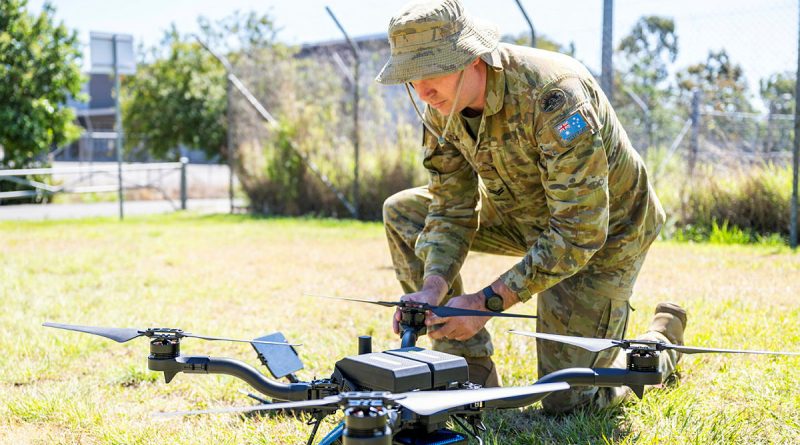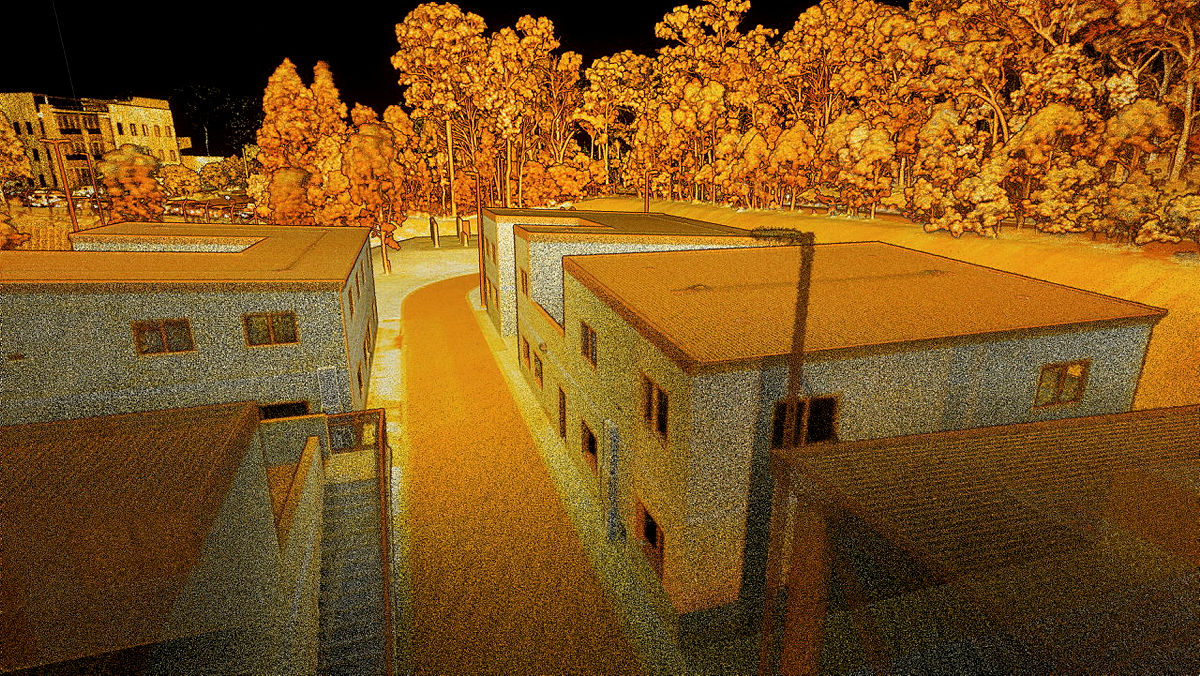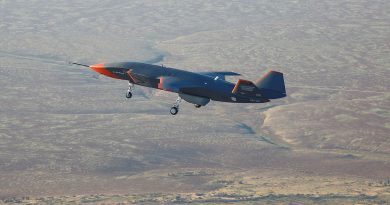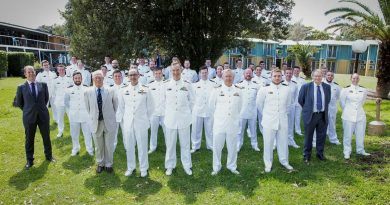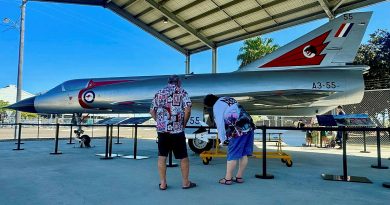Taking flight to cover more ground

12th Chief Engineer Works (12CEW) in Brisbane is trialling a new capability to capture detailed spatial data over larger areas in less time, while keeping surveyors out of harm’s way.
CAPTION: Australian Army soldier Corporal Sam Kelly prepares an uncrewed aerial system with a mounted LiDAR unit for a test flight at Gallipoli Barracks, Brisbane. Story by Captain Nigel Jacobs. Photo by Lance Corporal Luke Donegan.
Army surveyors support a wide variety of Defence construction projects, including major infrastructure, field structures, obstacles, roads, helicopter landing pads, as well as temporary and semi-permanent camps.
They all require accurate survey data.
Current Army surveying techniques are ground-based, which limits the area that can be surveyed based on time, access and tactical constraints.
Ground-based surveying can also expose the surveyors to risks associated with wildlife, enemy forces or trip and fall hazards.
Corporal Sam Kelly, a surveyor at 12CEW, is trialling the use of a LiDAR (light detection and ranging) unit mounted on an uncrewed aerial system (UAS), commonly referred to as a drone.
“LiDAR uses pulses of light in the form of lasers to measure the distance to an object,” Corporal Kelly said.
“The LiDAR punches out a dome of 300,000 laser lights a second and the system measures how long the light takes to reach the surface then reflect back to the LiDAR unit.
“Using that data the system can measure how far away the object is, and if you have enough points you can create an accurate image of whatever you are scanning, be it a building, a car or the surface of the earth in a particular location.
“The data from the LiDAR, combined with other data from a GPS or an inertial navigation system, is used to collect precise, three-dimensional information about the ground and any objects on top of it.”
CAPTION: The image captured by a LiDAR scan during a test flight at Gallipoli Barracks, Brisbane.
For the purposes of the trial the LiDAR unit is mounted on an American-made UAS, but it can also be hand-held for scanning the inside of structures, or mounted on a vehicle for use in locations where UAS are not permitted to fly.
Corporal Kelly said the trial showed there were advantages over the current in-service surveying methods.
“The biggest advantage is speed. Using the LiDAR in this way we can accurately scan approximately 20,000 square metres in 20 minutes,” Corporal Kelly said.
“To cover the same area using our current systems would take up the majority of an eight-hour day.
“Scanning from height also lets us capture the tops of buildings without climbing on top of them.”
Another key advantage the aerial-mounted LiDAR offers is to easily and accurately survey vegetated areas.
“Surveying a vegetated area can be incredibly time consuming using our standard equipment,” Corporal Kelly said.
“Trees can block line of sight to the total station, which means we have to set up in multiple locations in order to take accurate measurements.
“Even GPS-based systems have difficulty if the tree canopy blocks the view to the satellites.”
A UAS with a mounted LiDAR can fly above the treetops and still conduct an accurate scan of the ground, as long as the canopy allows some light to reach the ground.
“You’re not going to see every single centimetre of the ground, but you’re going to see enough that you can piece together what the terrain is doing in the same way you would if you were physically walking the ground with terrestrial survey equipment,” he said.
“Once you’ve completed the scan and processed the data you can create a visual representation of the ground in the computer – you can even digitally remove the trees, making it much easier to look at the ground level and read the terrain.”
While UAS-mounted LiDAR units have been used for surveying projects in the construction sector for some time, this trial represents the first time it has been used by Defence surveyors.
The idea to trial the use of a UAS-mounted LiDAR unit for surveying has been years in the making.
At the 2022 6th Brigade and SOCOMD Innovation Day, Lance Corporal Michael Raymont, a surveyor at 19CEW, was awarded first place for his innovative idea.
“When I was deployed on Operation Southern Discovery down in Antarctica we used a terrestrial laser scanner and, given the size of the area we were surveying, it took a couple of months to complete the survey,” Lance Corporal Raymont said.
“We also had a drone down there, which we could only use sporadically due to the weather constraints, but it was clear you could survey a huge area much faster than we could if we were moving on foot.”
During a deployment to Papua New Guinea Lance Corporal Raymont took a UAS with him to assist with some of the survey work.
“We had a really short time, three hours actually, in one location so I only had time to use the drone,” Lance Corporal Raymont said.
“The amount of data we got out of that activity exceeded anything I could have achieved using our normal terrestrial in-service means.
“A LiDAR drone is 100 per cent a game-changing capability that we’re very keen to use in our work.”
The trial is expected to be completed this month.
.
.

.
.

